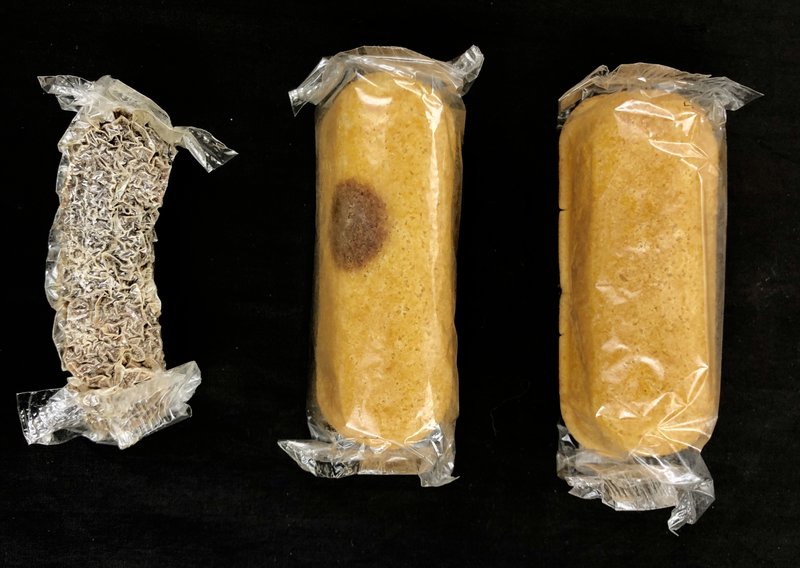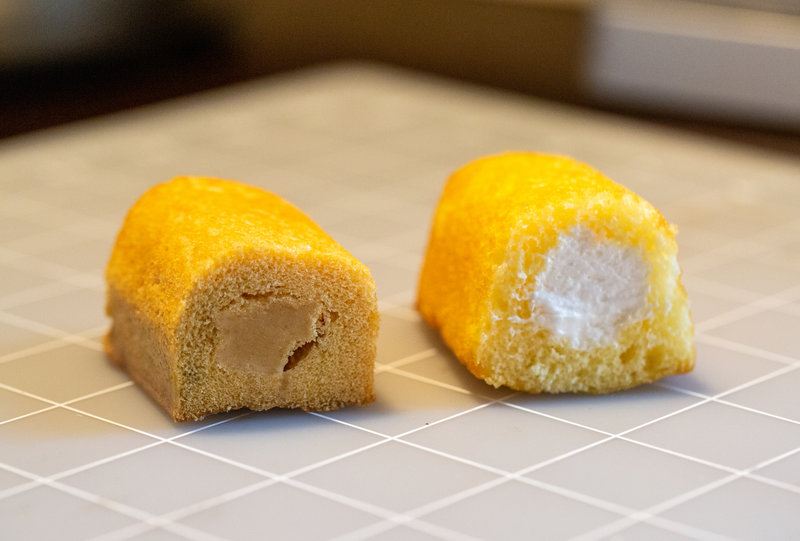
Matt Kasson
A few weeks ago, Colin Purrington remembered the Twinkies.
Colin purchased the Twinkies back in 2012 for sentimental reasons when he heard that Hostess Brands was going bankrupt and Twinkies might disappear forever.
Colin was seriously craving sweets and decided to head to the basement to retrieve the old box of delicious, sugary treats. Thinking that the Twinkies were immortal (despite the 45-day advertised shelf life), Colin decided to dig in.
Unwrapping one of the Twinkies, which looked normal — Colin took a bite. Then almost puked.
“It tasted like old sock,” Purrington says. “Not that I’ve ever eaten old sock.”, Colin told NPR.
That’s when he examined the other Twinkies. Two looked weird. One had a dark-colored blemish the size of a quarter. The other Twinkie was completely transformed — it was gray, shrunken and wrinkly, like a dried morel mushroom.
He posted photos on Twitter, and they caught the attention of two scientists: Brian Lovett and Matt Kasson, who study fungi at West Virginia University in Morgantown.

“Matt is going to want that Twinkie,” thought Lovett, the instant he saw the mummified one.
The researchers immediately thought some kind of fungus was involved in attacking the 8-year-old Twinkies, because they’ve studied fungi that kill insects and dry them out in a similar way.
Colin ultimately mailed the Twinkies to Matt and Brian.
They noticed that the wrapping on the mummified Twinkie seemed to be sucked inward, suggesting that the fungus got in before the package was sealed and, while the fungus was consuming the Twinkie, it was using up more air or oxygen than it was putting out.
“You end up with a vacuum,” Lovett says. “And very well that vacuum may have halted the fungus’s ability to continue to grow. We just have the snapshot of what we were sent, but who knows if this process occurred five years ago and he just only noticed it now.”
Lovett had expected a horrific smell to hit them when they opened the snack cakes. “I though the smell would possibly kill one of us, but because of the mummification there really was no smell at all,” he says, “which was really a pleasant surprise.”
A quick examination with a magnifying scope revealed fungal sporulation on both the marred and mummified Twinkies, again suggesting the involvement of fungi.
The fascinating thing about these Twinkies is how they all aged so differently and how the fungi attacked a few, but not all.
The severely colonized cake was quite challenging to sample. Thanks to a bone marrow biopsy tool, we made quick work of it! pic.twitter.com/IYik3iWPvb
— Matt Kasson (@kasson_wvu) October 8, 2020
These Twinkies may be 8-years-old, but they are not the oldest Twinkies on the planet.
At the George Stevens Academy in Maine, for example, there’s a Twinkie that’s been around since a science teacher started an observational experiment in 1976.





